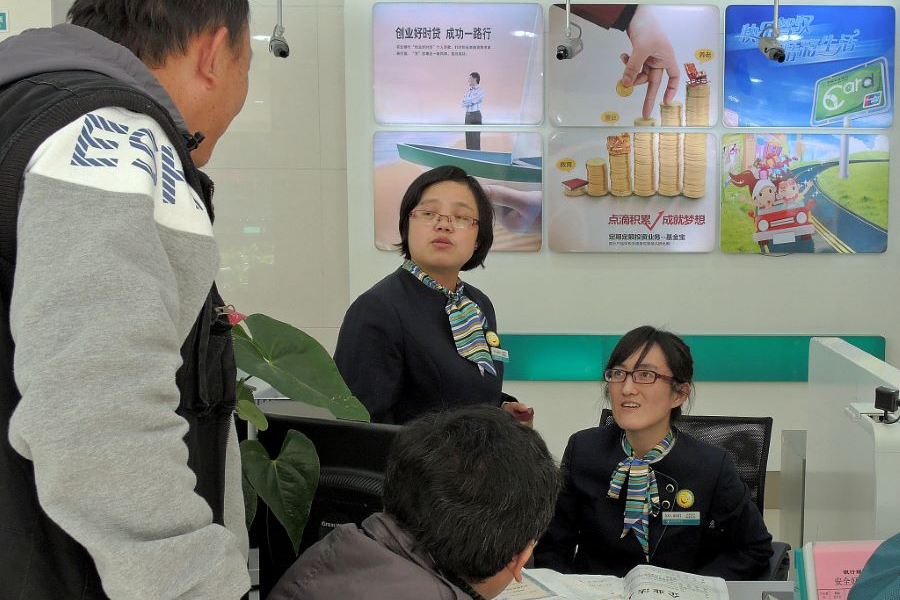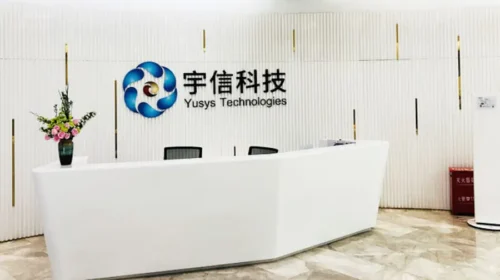Lufax takes on more risk, makes Hong Kong acquisition, as its lending shrivels

The online loan facilitator’s revenue plunged 39% in the third quarter, as its loan delinquency rates rose sharply from a year earlier
Key Takeaways:
- Lufax’s new loan originations fell 59% in the third quarter, as creditworthy customers became harder to find in China’s slowing economy
- The online lender announced it will purchase a Hong Kong-based virtual bank from sister company OneConnect for HK$933 million, in a move to diversify beyond Mainland China
By Doug Young
Lufax Holding Ltd. (LU.US; 6623.HK) maintained its status as one of several fast-shrinking companies in China’s turbulent online lending realm, posting continued big contraction for all of its major metrics in its third-quarter results announced on Monday. As the heat turns up in its Mainland China home market, the company also announced its diversification into adjacent Hong Kong with its purchase of a mid-sized virtual bank from a sister company.
Investors were most focused on Lufax’s deteriorating situation at home, which included big jumps in its delinquency ratios as more of its customers showed signs of defaulting on their loans. At the same time, the company, which facilitates loans between borrowers and banks, is taking on greater risk by helping to guarantee the loans it facilitates.
Lufax shares fell nearly 5% in after-market trading in New York after the release of its latest quarterly report late on Monday. If the declines hold in regular Tuesday trade, the stock would trade below the critical $1 level that can automatically trigger a de-listing notification. The company’s Hong Kong-listed shares were down by a similar 5.2% in Tuesday morning trade.
Lufax and peers like FinVolution (FINV.US) and Qifu Technology (QIFU.US; 3660.HK) are among a group of China’s earliest fintech companies that thrived when Beijing first opened the lending sector to private companies nearly a decade ago. Most of those companies, often called P2P lenders at the time, have long since folded after a regulatory crackdown.
The survivors like Lufax and FinVolution have had to navigate increasing regulation that has pushed most into the loan facilitation business that is less heavily regulated than actual lending. But a major slowdown for China’s economy has affected their ability to find creditworthy customers, mostly consumers and small businesses, resulting in big contraction in their lending activity. And the difficult environment means that even when they find qualified borrowers, those borrowers are more likely to default on their loans.
“While recent data has indicated that China’s economy is on the road to recovery, high-quality demand for loans from small business owners remained weak in the third quarter,” said Lufax Chairman YongSuk Cho. “Given this environment, we took steps to further de-risk and diversify our business during the quarter, emphasizing prudent decision-making and long-term, sustainable growth.”
He added that the company continues to prioritize asset quality over quantity, a polite way of saying the company’s loan facilitation activities have dropped sharply as it faces growing difficulty finding creditworthy customers.
Reflecting that, new loans the company facilitated during the quarter plunged 59% year-on-year to 50.5 billion yuan ($6.94 billion), similar to decline rates in the first half of the year. The plunge in new loans caused the company’s overall loan portfolio to shrink by 43% year-on-year in the third quarter to 366 billion yuan, accelerating from a 36% decline for that metric in the second quarter.
Souring loans
Next, we’ll look at some of Lufax’s other main metrics, which read like a laundry list of major contracting indicators. The company’s top-line revenue tumbled 39% to 8.1 billion yuan, roughly the same as the 41% decline in the first half of the year. So, perhaps some might take consolation in the fact that the revenue declines appear to be stabilizing.
In terms of default risks, Lufax said 6.0% of its loans were delinquent for more than 30 days at the end of September, up slightly from three months earlier but much larger than the 3.6% delinquency rate at the end of September last year. Loans more than 90 days delinquent showed a similar trend, rising to 3.7% of Lufax’s total at the end of September from 2.1% a year earlier.
As Lufax’s lending partners become more risk-averse, the company is also having to offer them more assurances by taking on some of the risk for new loans. That appears in Lufax’s metric that shows it assumed risk for 54.3% of the new loans it facilitated in the third quarter, which excludes its consumer finance subsidiary. That was more than double the figure for a year earlier, when it assumed some risk for 21.7% of its new loans.
The good news is that Lufax is controlling its costs, reporting its expenses fell 30% in the third quarter year-on-year. Its credit and asset impairment losses also fell by a similar amount, showing that at least for now it isn’t taking a big hit from defaulting loans.
But the overall contraction of its core lending activity filtered down to its bottom line, with the company’s profit tumbling 90% to 131 million yuan from 1.36 billion yuan a year earlier. The company trades at a price-to-earnings (P/E) ratio of 7.9, which is relatively high compared to the 4.3 for FinVolution and 4.7 for Qifu Technology, but behind the 10.8 for U.S. peer LendingClub (LC.US).
We’ll close with a look at look at Lufax’s Hong Kong foray, which comes from its newly announced purchase of Ping An OneConnect Bank, one of the city’s eight licensed virtual banks, from OneConnect (OCFT.US; 6638.HK) for HK$933 million ($119 million). The purchase is very much a family affair, since Lufax and OneConnect are both controlled by financial services giant Ping An.
The bank is still quite young and small, since Hong Kong just issued its virtual banking licenses in 2019. But its business is growing quickly, with revenue tripling to HK$124 million last year from HK$42 million in 2021. While that’s still small compared to Lufax’s overall business, it represents an important diversification move from the company’s reliance on the volatile Mainland China market. FinVolution is making a similar play to become more geographically diverse as well, though that initiative is also in its early stages.
The bottom line is that Lufax and its peers are currently navigating some very choppy waters in China, and are engaging in a delicate balancing act between keeping up their core lending activity while maintaining credit quality. In such a difficult situation, the latest numbers do seem to show its overall situation may be starting to stabilize, though investors will be closely following the recent increases in its loan delinquency rates.
Have a great investment idea but don’t know how to spread the word? We can help! Contact us for more details.
The Bamboo Works offers a wide-ranging mix of coverage on U.S.- and Hong Kong-listed Chinese companies, including some sponsored content. For additional queries, including questions on individual articles, please contact us by clicking here.
To subscribe to Bamboo Works free weekly newsletter, click here






